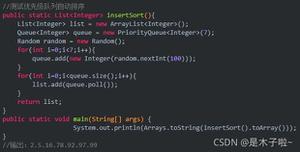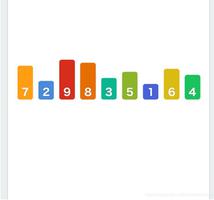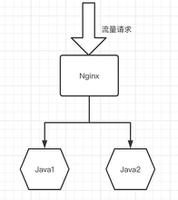C#中Dictionary<TKey,TValue>排序方式的实现
自定义类:
using System;
using System.Collections.Generic;
using System.Linq;
using System.Text;
using System.Threading.Tasks;
namespace CSharp中Dictionary排序方式
{
[Serializable]
public class CustmonizedClass
{
public string stuName { get; set; }
public int stuAge { get; set; }
public string stuSex { get; set; }
public double stuScore { get; set; }
}
}
Dictionary<int,自定义类>
按照Dictionary的Key值 升序排序(OrderBy)、降序排序(OrderByDescending):
using System;
using System.Collections.Generic;
using System.Linq;
using System.Text;
using System.Threading.Tasks;
namespace CSharp中Dictionary排序方式
{
public class Program
{
static void Main(string[] args)
{
CustmonizedClass cn1 = new CustmonizedClass();
cn1.stuName = "张三";
cn1.stuAge = 18;
cn1.stuSex = "男";
cn1.stuScore = 89.5;
CustmonizedClass cn2 = new CustmonizedClass();
cn2.stuName = "李四";
cn2.stuAge = 19;
cn2.stuSex = "男";
cn2.stuScore = 88.5;
CustmonizedClass cn3 = new CustmonizedClass();
cn3.stuName = "王五";
cn3.stuAge = 17;
cn3.stuSex = "女";
cn3.stuScore = 89.5;
Dictionary<int, CustmonizedClass> dic1 = new Dictionary<int, CustmonizedClass>();
dic1.Add(3, cn1);
dic1.Add(1, cn2);
dic1.Add(2, cn3);
//上面dic1.Add()故意不按照顺序
Dictionary<int, CustmonizedClass> dic1_SortedByKey = dic1.OrderBy(p=>p.Key).ToDictionary(p => p.Key, o => o.Value);
foreach (KeyValuePair<int, CustmonizedClass> item in dic1_SortedByKey)
{
Console.WriteLine("Key:{0} ; Value: name:{1}, age:{2}, sex:{3}, score:{4} ",
item.Key,item.Value.stuName,item.Value.stuAge,item.Value.stuSex,item.Value.stuScore);
}
Console.ReadLine();
}
}
}
Dictionary<int, CustmonizedClass> dic1_SortedByKey = dic1.OrderBy(p=>p.Key).ToDictionary(p => p.Key, o => o.Value);
结果截图:
降序排序:
Dictionary<int, CustmonizedClass> dic1_SortedByKey = dic1.OrderByDescending(p => p.Key).ToDictionary(p => p.Key, o => o.Value);
结果截图:
按照Dictionary的Value值的某个属性 升序排序(OrderBy)、降序排序(OrderByDescending):
using System;
using System.Collections.Generic;
using System.Linq;
using System.Text;
using System.Threading.Tasks;
namespace CSharp中Dictionary排序方式
{
public class Program
{
static void Main(string[] args)
{
CustmonizedClass cn1 = new CustmonizedClass();
cn1.stuName = "张三";
cn1.stuAge = 18;
cn1.stuSex = "男";
cn1.stuScore = 89.5;
CustmonizedClass cn2 = new CustmonizedClass();
cn2.stuName = "李四";
cn2.stuAge = 19;
cn2.stuSex = "男";
cn2.stuScore = 88.5;
CustmonizedClass cn3 = new CustmonizedClass();
cn3.stuName = "王五";
cn3.stuAge = 17;
cn3.stuSex = "女";
cn3.stuScore = 89.5;
Dictionary<int, CustmonizedClass> dic1 = new Dictionary<int, CustmonizedClass>();
dic1.Add(3, cn1);
dic1.Add(1, cn2);
dic1.Add(2, cn3);
//上面dic1.Add()故意不按照顺序
//Key升序
//Dictionary<int, CustmonizedClass> dic1_SortedByKey = dic1.OrderBy(p=>p.Key).ToDictionary(p => p.Key, o => o.Value);
//Key降序
//Dictionary<int, CustmonizedClass> dic1_SortedByKey = dic1.OrderByDescending(p => p.Key).ToDictionary(p => p.Key, o => o.Value);
//Value中stuAge属性
Dictionary<int, CustmonizedClass> dic1_SortedByKey = dic1.OrderBy(o => o.Value.stuAge).ToDictionary(p => p.Key, o => o.Value);
foreach (KeyValuePair<int, CustmonizedClass> item in dic1_SortedByKey)
{
Console.WriteLine("Key:{0} ; Value: name:{1}, age:{2}, sex:{3}, score:{4} ",
item.Key,item.Value.stuName,item.Value.stuAge,item.Value.stuSex,item.Value.stuScore);
}
Console.ReadLine();
}
}
}
关键修改这句:
Dictionary<int, CustmonizedClass> dic1_SortedByKey = dic1.OrderBy(o => o.Value.stuAge).ToDictionary(p=>p.Key,o=>o.Value);
结果截图:
混合排序:类似EXCEL中先按第一列升序、再按第3列的升序……
using System;
using System.Collections.Generic;
using System.Linq;
using System.Text;
using System.Threading.Tasks;
namespace CSharp中Dictionary排序方式
{
public class Program
{
static void Main(string[] args)
{
CustmonizedClass cn1 = new CustmonizedClass();
cn1.stuName = "张三";
cn1.stuAge = 18;
cn1.stuSex = "男";
cn1.stuScore = 89.5;
CustmonizedClass cn2 = new CustmonizedClass();
cn2.stuName = "李四";
cn2.stuAge = 19;
cn2.stuSex = "男";
cn2.stuScore = 88.5;
CustmonizedClass cn3 = new CustmonizedClass();
cn3.stuName = "王五";
cn3.stuAge = 17;
cn3.stuSex = "女";
cn3.stuScore = 89.5;
Dictionary<int, CustmonizedClass> dic1 = new Dictionary<int, CustmonizedClass>();
dic1.Add(3, cn1);
dic1.Add(1, cn2);
dic1.Add(2, cn3);
//上面dic1.Add()故意不按照顺序
//Key升序
//Dictionary<int, CustmonizedClass> dic1_SortedByKey = dic1.OrderBy(p=>p.Key).ToDictionary(p => p.Key, o => o.Value);
//Key降序
//Dictionary<int, CustmonizedClass> dic1_SortedByKey = dic1.OrderByDescending(p => p.Key).ToDictionary(p => p.Key, o => o.Value);
//Value中stuAge属性
//Dictionary<int, CustmonizedClass> dic1_SortedByKey = dic1.OrderBy(o => o.Value.stuAge).ToDictionary(p => p.Key, o => o.Value);
//混合排序 等同于下列的linq语句
//Dictionary<int, CustmonizedClass> dic1_SortedByKey = dic1.OrderBy(o => o.Value.stuScore).ThenByDescending(o=>o.Value.stuAge).ToDictionary(p=>p.Key,o=>o.Value);
//linq语句
var dic1_SortedByKey = from n in dic1
orderby n.Value.stuScore, n.Value.stuAge descending
select n;
foreach (KeyValuePair<int, CustmonizedClass> item in dic1_SortedByKey)
{
Console.WriteLine("Key:{0} ; Value: name:{1}, age:{2}, sex:{3}, score:{4} ",
item.Key,item.Value.stuName,item.Value.stuAge,item.Value.stuSex,item.Value.stuScore);
}
Console.ReadLine();
}
}
}
Dictionary<int, CustmonizedClass> dic1_SortedByKey = dic1.OrderBy(o => o.Value.stuScore).ThenByDescending(o=>o.Value.stuAge).ToDictionary(p=>p.Key,o=>o.Value);
等同于linq语句:
var dic1_SortedByKey = from n in dic1
orderby n.Value.stuScore, n.Value.stuAge descending
select n;
结果截图:
到此这篇关于C#中Dictionary<TKey,TValue>排序方式的实现的文章就介绍到这了,更多相关C# Dictionary<TKey,TValue>排序内容请搜索以前的文章或继续浏览下面的相关文章希望大家以后多多支持!
以上是 C#中Dictionary<TKey,TValue>排序方式的实现 的全部内容, 来源链接: utcz.com/z/357091.html








